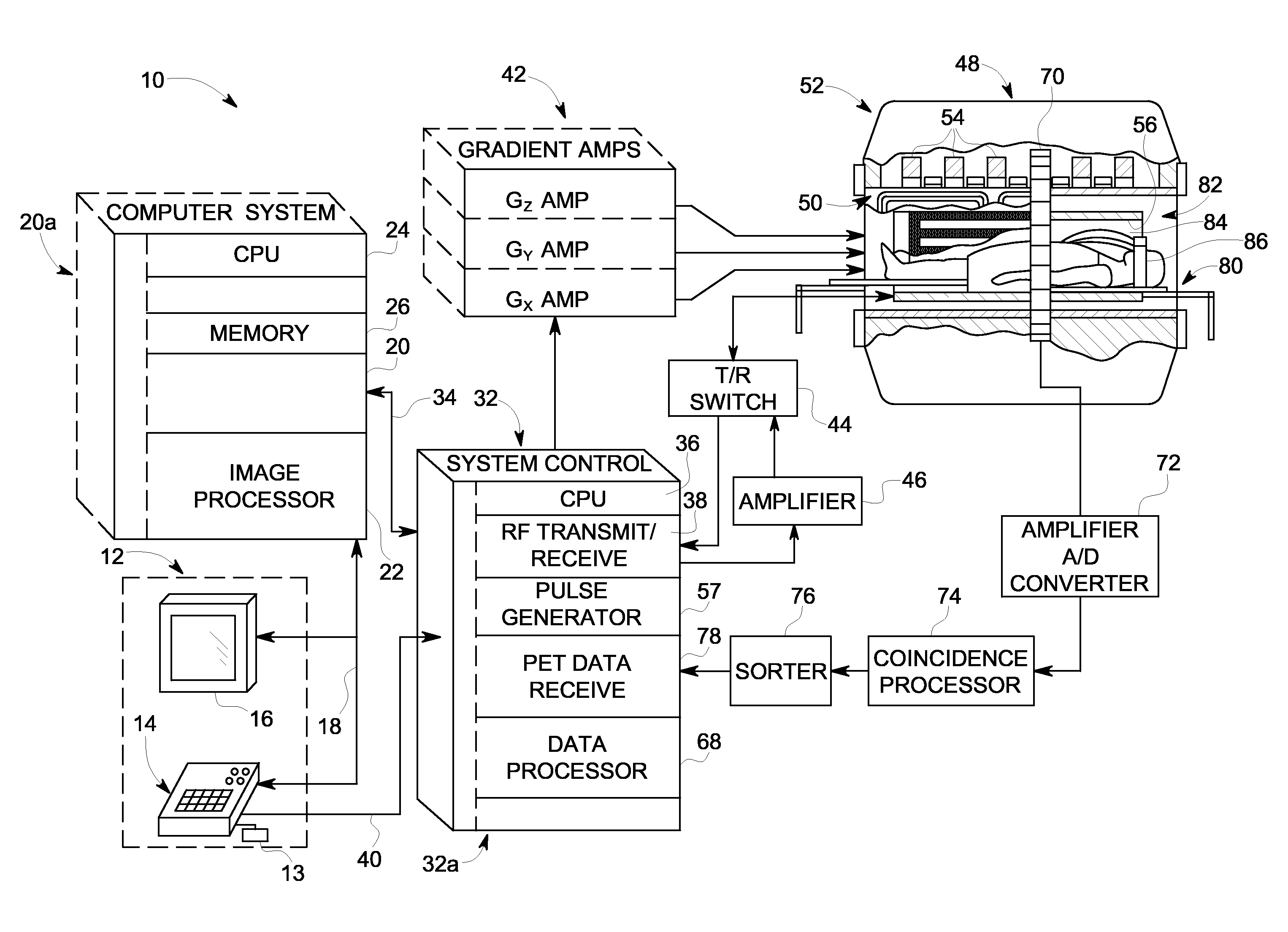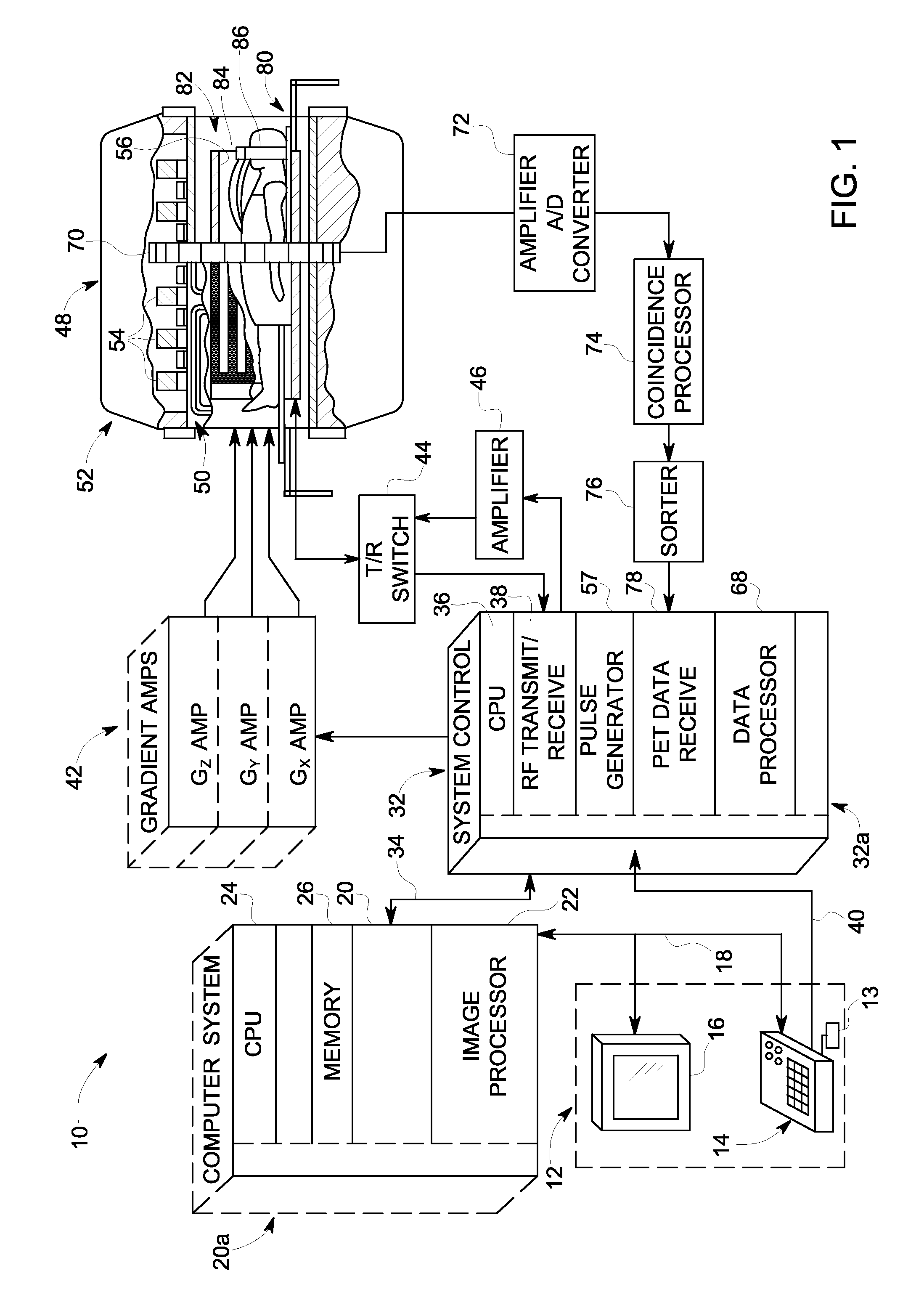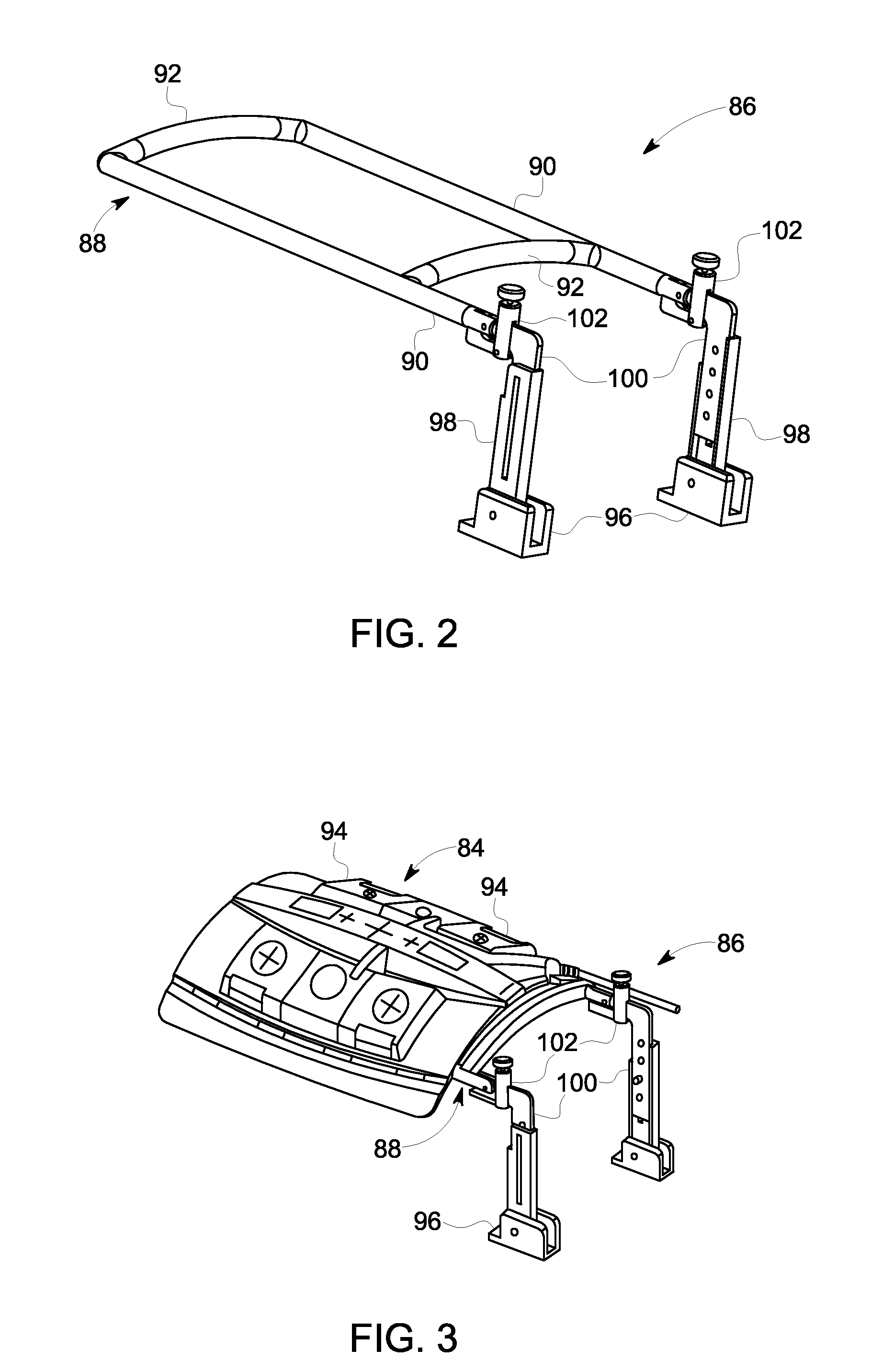Stationary anterior phased array coil for simultaneous pet-mr imaging
a surface coil and phased array technology, applied in the field of combined petmr system incorporating stationary anterior phased array surface coil, can solve the problems of large coil, reduced signal-to-noise ratio (snr), and mutual annihilation, and achieve the effect of reducing the attenuation of acquired mr signals and pet emissions
- Summary
- Abstract
- Description
- Claims
- Application Information
AI Technical Summary
Benefits of technology
Problems solved by technology
Method used
Image
Examples
Embodiment Construction
[0020]An anterior surface coil array positioning system for use in a PET-MR system is provided. The anterior surface coil array positioning system enables vertical adjustment of the coronal positioning of the anterior surface coil array relative to a patient as well as angular adjustment of the anterior surface coil array relative to the coronal plane, such that the coil array can be bridged or cantilevered over a patient that is to be imaged while still isolating the anterior surface coil array from the patient.
[0021]Referring to FIG. 1, the major components of an exemplary hybrid PET-MR imaging system 10 that may incorporate embodiments of the present invention are shown. The operation of the system may be controlled from an operator console 12 which includes a keyboard or other input device 13, a control panel 14, and a display screen 16. The console 12 communicates through a link 18 with a separate computer system 20 that enables an operator to control the production and display...
PUM
 Login to View More
Login to View More Abstract
Description
Claims
Application Information
 Login to View More
Login to View More - R&D
- Intellectual Property
- Life Sciences
- Materials
- Tech Scout
- Unparalleled Data Quality
- Higher Quality Content
- 60% Fewer Hallucinations
Browse by: Latest US Patents, China's latest patents, Technical Efficacy Thesaurus, Application Domain, Technology Topic, Popular Technical Reports.
© 2025 PatSnap. All rights reserved.Legal|Privacy policy|Modern Slavery Act Transparency Statement|Sitemap|About US| Contact US: help@patsnap.com



